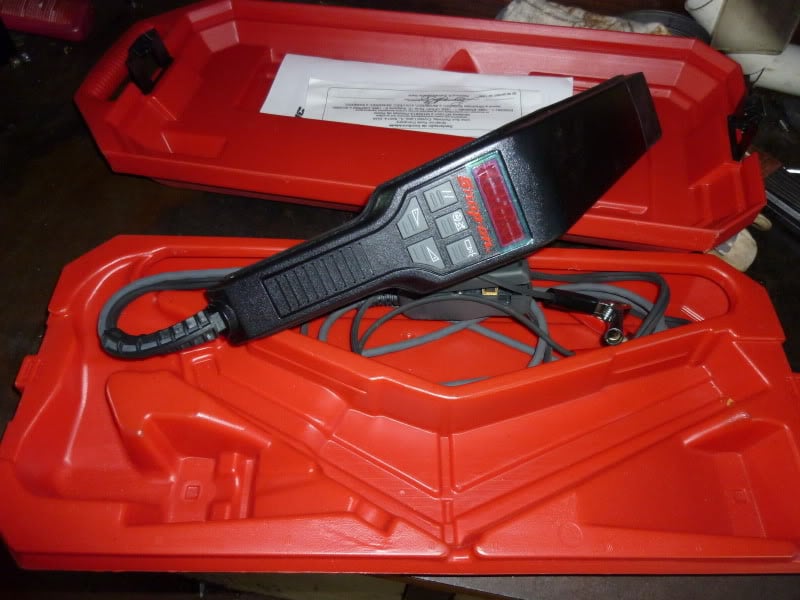202 red head settings and Q's
#26
 _RB26DETT_
_RB26DETT_
Posted 06 January 2012 - 03:50 PM
#27
 _oldjohnno_
_oldjohnno_
Posted 06 January 2012 - 05:11 PM
#28
 _RB26DETT_
_RB26DETT_
Posted 06 January 2012 - 05:24 PM
i will see what it shows, if it looks fair i will leave it and play with the timing once its on the water
#29
 _Bomber Watson_
_Bomber Watson_
Posted 06 January 2012 - 08:20 PM
http://www.summitrac...parts/INN-3806/
Cheers.
#30
 _CHOPPER_
_CHOPPER_
Posted 06 January 2012 - 08:31 PM
#31

Posted 06 January 2012 - 08:41 PM
Be careful if you are going to use idle vacuum as a guide to initial timing. I've seen this method encourage the use of so much low speed advance that it scuffed pistons and bores even though there was no audible knocking. I think the use of a vacuum gauge to set initial advance can be very misleading.
could you elaborate on this please oldjohnno?
reason I ask is i had scuffing and engine buider told it was from overheating(although im sure that wasnt the case)
Edited by originalglenn, 06 January 2012 - 08:42 PM.
#32

Posted 06 January 2012 - 10:32 PM
If you plan on checking advance,,dont do it on plane because on a plane its a lighter load than when the bow is
in the air & the hull pushing water, peak cylinder pressures are much higher "under load"(ping).@ max torque.then bak it off.
Triple SUs or webers for torque which is what a boat needs,The single SU sounds very feasable as well.
Dont go big on cam or heads,as already posted,,there is another prob.
#33
 _oldjohnno_
_oldjohnno_
Posted 07 January 2012 - 06:46 AM
That poor carby.,It is not a varajet as we know it but it dont look like a stromy either(unless they made later model).
Read post #11, line 3.
#34

Posted 07 January 2012 - 06:53 AM
Be careful if you are going to use idle vacuum as a guide to initial timing. I've seen this method encourage the use of so much low speed advance that it scuffed pistons and bores even though there was no audible knocking. I think the use of a vacuum gauge to set initial advance can be very misleading.
I also would like some proof High vacuum leads to scuffing etc unless the user of the gauge could not use the thing and just kept advancing.
I would never hesitate using a vacuum gauge to tune a motor.
#35
 _oldjohnno_
_oldjohnno_
Posted 07 January 2012 - 07:26 AM
could you elaborate on this please oldjohnno?
reason I ask is i had scuffing and engine buider told it was from overheating(although im sure that wasnt the case)
It's mainly from heat, you can cook the pistons without actually having the coolant temp read high.
Setting the timing with a vacuum gauge is one of the dumbest things you can do (up to and including marriage) and yet here we are with a sticky at the top of the page telling people how to do it. It can and does go horribly wrong and here's how:
Let's say a young bloke puts a Chev in his car, it's got cast pistons, mild cam and stock converter. He reads somewhere that you can set the idle mixture and timing with a vacuum gauge. So off he goes and hooks it up and the first thing he finds is that the vacuum goes up with a few more degrees advance. So he does that and readjusts the mixture and idle speed and if he's like anyone else he'll go back over all the adjustments to fine tune. Now here's the thing; the ideal spark advance is related to cylinder pressure, so if you increase manifold vacuum you also increase the amount of advance the engine likes. Old mate has already increased the vacuum a bit and now finds it wants a bit more advance. So he gives it a bit more and readjusts the mixture and idle speed again. He might even repeat the procedure again, and it's entirely possible that the engine is now running 20deg or more at idle.
He's pretty happy with himself, the engine is idling really nicely, the exhaust is quiet and the headers don't seem to be throwing off so much heat. Off idle response is really sharp. If all the engine did was idle it'd be fine. But he spends a fair bit of time driving around town with the engine doing around 1500 - 2000 rpm. Here's the problem: by 2000 rpm the mechanical advance has thrown a few more degrees on top of what he'd already dialled in so he could quite easily be around 30 or more. This is too much for the engine - the cylinder pressures are up with just a bit of throttle because the speed is so low, so it probably doesn't want or need much advance, possibly even less than what the initial is now set at. It's not quite bad enough to audibly knock but the preignition is putting the piston temperature through the roof and with his close fitting cast pistons they start to "pick up" and scuff. The ring lands might pinch and the rings might score too. The trouble is old mate is unaware of all this - he might think the engine is running a bit warmer than before (and if it's done a few k's it might run on a bit when he shuts it off) but it'll probably run fine until he notices it's getting a bit fumey and using oil. When he pulls it down he'll find all the signs of being cooked but without the temp gauge having ever been into the red.
Edited by oldjohnno, 07 January 2012 - 07:40 AM.
#36
 _Drag lc_
_Drag lc_
Posted 07 January 2012 - 08:16 AM

#37

Posted 07 January 2012 - 05:22 PM
Re curve a dizzy if you are getting too much mid range.
#38
 _RB26DETT_
_RB26DETT_
Posted 08 January 2012 - 10:08 AM
i will be using the timing light as well as the vac gauge
#39
 _CHOPPER_
_CHOPPER_
Posted 08 January 2012 - 12:27 PM
#40
 _oldjohnno_
_oldjohnno_
Posted 08 January 2012 - 02:46 PM
can this still happen if you set the vac with in the range of 15-20 with timing set to around the 7deg???
i will be using the timing light as well as the vac gauge
I'll spell it out - forget about the vacuum gauge, it won't get you an appropriate initial advance setting and it won't get you an appropriate idle mixture setting either. Glue it to the shadowboard as an ornament.
Take the boat out and find the mainjet and total advance combination that gives the highest top speed. If you need to change the prop to "gear" it properly then this procedure should be rechecked. Ideally the top speed will coincide with peak hp rpm.
Once you're happy the top end is as good as it's going to get you can experiment with different initial advance settings that give the best response and acceleration from off-idle to about 2500 - 3000 rpm. You'll probably end up with around 10 - 12 degrees initial. Use caution with any more than 15 degrees. Obviously if you crank in more initial you'll also have more total as well so don't rev it right out until you've also limited the total advance. Try not to have the advance start until at least 200 -300 above idle speed and then aim to have it all in by about 3500. The ideal will vary according to the combo but this should be close for what you have.
Disconnect the vac advance when you set the timing. The vac advance will have little effect on a boat anyway, except at very low speeds and throttle openings.
Edited by oldjohnno, 08 January 2012 - 02:50 PM.
#41
 _RB26DETT_
_RB26DETT_
Posted 13 January 2012 - 07:35 AM
I have tried retuning the carbie but it is still running rich, i wound the idle mixture screw all they way in and you could still smell it was rich,
photos coming soon
#42
 _RB26DETT_
_RB26DETT_
Posted 13 January 2012 - 08:01 AM
Attached Files
#43
 _Bomber Watson_
_Bomber Watson_
Posted 13 January 2012 - 07:42 PM
#44
 _Bluejinx202_
_Bluejinx202_
Posted 20 January 2012 - 12:29 PM
One of those wideband oxy sensors that bomber pointed out would be pretty cool, but you can't run water through the pipes (what did you do bomber?)
We just tune off plug colour.... Idle around at 900 rpm for five minutes, check the colour. Run it half throttle for five, check colour, then flat out and repeat. As long as there's no black soot on the back of the boat were happy and engine sounds good and revs cleanly.
Sure there's better more accurate ways, but that works for us with a single 45 dcoe weber.
#45
 _Bomber Watson_
_Bomber Watson_
Posted 20 January 2012 - 07:14 PM
Cheers.
1 user(s) are reading this topic
0 members, 1 guests, 0 anonymous users
















